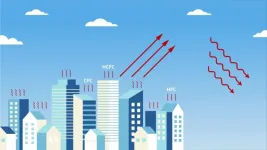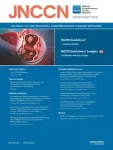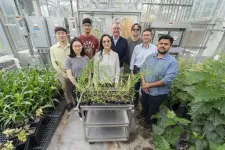(Press-News.org) Texas A&M has been announced as a recipient of a $1.5 million grant from the Inflation Reduction Act to address climate-damaging hydrofluorocarbons.
The grant is among the five projects funded by the United States Environmental Protection Agency (EPA) totaling $15 million and includes three other universities: the University of Washington, Drexel University and the University of California- Riverside, along with the Air Conditioning, Heating and Refrigeration Institute.
Dr. Faruque Hasan, associate professor of chemical engineering and assistant director of the Texas A&M Energy Institute, is leading the research team from Texas A&M that is combatting climate change by reclaiming and destroying hydrofluorocarbons.
“It's about addressing different greenhouse gases that have adverse effects on the climate,” Hasan said. “One of them is a mixed refrigerant that we use for air conditioning and other applications, which is called hydrofluorocarbon or HFC.”
Texas A&M's project aims to reduce the time and cost of reclaiming HFCs in two ways. First is designing and testing a technology capable of separating a range of HFC mixtures, according to the United States Environmental Protection Agency.
Professor Hasan’s group specializes in mathematical modeling and computational optimization for the design and discovery of new processes and technologies for advanced gas separation, decarbonization of energy systems, and chemical supply chains. “This selection for the grant highlights the important research that we are doing at Texas A&M at the intersection of energy and the environment,” Hasan said.
Part two of the project includes incorporating a machine learning-based data-driven decision framework for reverse logistics with high supply chain visibility that includes quality, cost efficiency, changing market dynamics, stakeholder collaboration, safety, and environmental regulation, according to the EPA.
Overall, this project intends to achieve a 30% increase in reclaimed HFC and a 25% reduction in cost from the baseline operation. The project is expected to last five years.
With air conditioning, you need a refrigerant, and there is a push to replace refrigerants with high global warming potential because of their negative impact, according to Hasan.
“We also emit a significant amount of carbon dioxide, but the refrigerants that we use, if vented to the atmosphere, are several thousand times more potent as a greenhouse gas than carbon dioxide,” Hasan said.
According to the EPA, by increasing the reuse of existing HFCs, selected projects are expected to further reduce our economy’s need for new HFCs and reduce overall HFC impacts on our climate.
There are many different types of HFCs, and if collected in the same tank they will be contaminated. Furthermore, some HFCs form azeotropes that are extremely difficult and energy-intensive to separate in their pure forms and cannot be used for a better purpose.
“To address these, we will develop an advanced decision-making and optimization framework for HFC reclamation and reverse logistics,” Hasan said. “We're also going to test a new technology for separating the reclaimed HFCs to see whether that technology is robust.” As part of the project, Professor Hasan is collaborating with Professor Eleftherios “Lefteris” Iakovou from the Department of Engineering Technology and Industrial Distribution, and Icorium Engineering, an industrial partner focusing on HFC technology.
This grant’s goal is to find pathways for efficient, economic, and more sustainable reclamation of these greenhouse gasses.
“This is why both the process modeling, design and supply chain decision-making comes into play. We call the framework SMART-RECLAIM, which comes from Scalable, Modular and Adaptable Reclamation Technology for Hydrofluorocarbon Refrigerant Enhancement, Circular Logistics, and Intelligent Manufacturing,” Hasan said.
EPA anticipates that grants to the selected applicants will be finalized and awarded in the summer of 2024 once all legal and administrative requirements are satisfied. Selected applicants will begin projects in the fall and winter of this year.
Funding for this research is administered by the Texas A&M Engineering Experiment Station (TEES), the official research agency for Texas A&M Engineering.
By Raven Wuebker, Texas A&M University Engineering
###
END
Texas A&M receives grant from Inflation Reduction Act
More than $15 million in grants have been awarded to five research participants, including Texas A&M, to combat the effects of climate change
2024-06-11
ELSE PRESS RELEASES FROM THIS DATE:
Texas A&M researcher receives grant for work on phase separation
2024-06-11
Chemical engineering professor Dr. Jeetain Mittal has received a National Institutes of Health grant to support his work on phase separation.
Mittal’s research focuses on developing a multiscale computational framework to investigate the role of phase separation in biology, particularly in the formation of heterochromatin. Heterochromatin condensates are membraneless organelles that help control gene expression.
A key aspect of the proposal is the role of phase separation in chromatin organization, highlighting the need for new models in this area. Mittal’s ...
Wind from black holes may influence development of surrounding galaxies
2024-06-11
Clouds of gas in a distant galaxy are being pushed faster and faster — at more than 10,000 miles per second — out among neighboring stars by blasts of radiation from the supermassive black hole at the galaxy’s center. It’s a discovery that helps illuminate the way active black holes can continuously shape their galaxies by spurring on or snuffing out the development of new stars.
A team of researchers led by University of Wisconsin–Madison astronomy professor Catherine Grier and recent graduate Robert Wheatley revealed the accelerating gas using years of data collected from a quasar, a particularly ...
Impact Journals sponsors 2024 Ride for Roswell
2024-06-11
Impact Journals is thrilled to sponsor Team Open Access again in the annual cycling event to end cancer, The Ride for Roswell, on June 22, 2024.
BUFFALO, NY- June 11, 2024 – The Ride for Roswell is one of the nation’s largest cycling events—hosted by Roswell Park Comprehensive Cancer Center—to raise awareness and funds for cancer research and patient care. This charity bike ride, based out of Buffalo, New York, has brought people together for 28 years to celebrate cancer survivors, pay tribute to lives that have been lost, and to work together to support research and find a cure.
THE ORIGIN OF THE RIDE
The Ride for Roswell started ...
Safer virus helps eliminate cancer
2024-06-11
· Weakened virus helps eliminate melanoma and colon cancer in mice
· Therapy is effective in treating and even preventing cancer
· Virus raises ‘red flag’ on tumors so immune cells know to attack it
CHICAGO --- Northwestern Medicine scientists have discovered that an attenuated (weakened) virus can help eliminate cancer in mice. In addition, mice that were treated with this virus were more resistant to developing tumors later in life.
The attenuated virus — lymphocytic ...
Mizzou scientists spot more Milky Way-like galaxies in early universe
2024-06-11
University of Missouri scientists are peering into the past and uncovering new clues about the early universe. Since light takes a long time to travel through space, they are now able to see how galaxies looked billions of years ago.
In a new study, the Mizzou researchers have discovered that spiral galaxies were more common in the early universe than previously thought.
“Scientists formerly believed most spiral galaxies developed around 6 to 7 billion years after the universe formed,” said Yicheng Guo, an associate professor in Mizzou’s ...
How do supermassive black holes get super massive?
2024-06-11
UNIVERSITY PARK, Pa. — By combining forefront X-ray observations with state-of-the-art supercomputer simulations of the buildup of galaxies over cosmic history, researchers have provided the best modeling to date of the growth of the supermassive black holes found in the centers of galaxies. Using this hybrid approach, a research team led by Penn State astronomers derived a complete picture of black-hole growth over 12 billion years, from the Universe’s infancy at around 1.8 billion years old to now at 13.8 billion years old.
The research comprises two papers, ...
Pilot study in JNCCN explores new approach for reducing anxiety and improving quality of life after stem cell transplantation
2024-06-11
PLYMOUTH MEETING, PA [June 11, 2024] — New research in the June 2024 issue of JNCCN—Journal of the National Comprehensive Cancer Network highlights a promising approach for alleviating distress, enhancing quality of life, improving physical function, and reducing fatigue in patients with blood cancers who undergo hematopoietic stem cell transplantation (HSCT). The study used a randomized clinical trial to evaluate the feasibility of a nine-week, phone-delivered, positive psychology program called Positive Affect for the Transplantation of ...
Controlling the precise timing of electrical pulses may offer promise for treating mild traumatic brain injury
2024-06-11
An awkward beat doesn't help on the dance floor, but it could help people who are recovering from mild traumatic brain injury (mTBI).
Publishing online today (June 11, 2024) in the Journal of Neurotrauma, Virginia Tech scientists with the Fralin Biomedical Research Institute at VTC show that specifying the timing pattern of neurostimulation – impulses used to activate the brain’s own electrical signaling mechanisms – can rebalance the strength of synaptic connections between nerve cells, selectively up- or down-regulating those connections. While the timing pattern of electrical signaling is important in the normal brain, ...
Scientists engineer yellow-seeded camelina with high oil output
2024-06-11
UPTON, N.Y. — Efforts to achieve net-zero carbon emissions from transportation fuels are increasing demand for oil produced by nonfood crops. These plants use sunlight to power the conversion of atmospheric carbon dioxide into oil, which accumulates in seeds. Crop breeders interested in selecting plants that produce a lot of oil look for yellow seeds. In oilseed crops like canola, yellow-seeded varieties generally produce more oil than their brown-seeded counterparts. The reason: The protein responsible for brown seed color — which yellow-seeded plants lack — also plays a key role in oil production.
Now, plant biochemists at the U.S. Department of Energy’s (DOE) Brookhaven ...
Specialist and migratory birds at greater risk under climate change
2024-06-11
URBANA, Ill. -- Following decades of decline, even fewer birds will darken North American skies by the end of the century, according to a new analysis by scientists at the University of Illinois Urbana-Champaign. Their study is the first to examine the long-term effects of climate change on the abundance and diversity of bird groups across the continent as a whole while accounting for additional factors that put birds at risk, such as pesticides, pollution, land use change, and habitat loss.
“Many studies try to attribute causes like climate ...
LAST 30 PRESS RELEASES:
Sea reptile’s tooth shows that mosasaurs could live in freshwater
Pure bred: New stem cell medium only has canine components
Largest study of its kind highlights benefits – and risks – of plant-based diets in children
Synergistic effects of single-crystal HfB2 nanorods: Simultaneous enhancement of mechanical properties and ablation resistance
Mysterious X-ray variability of the strongly magnetized neutron star NGC 7793 P13
The key to increasing patients’ advance care medical planning may be automatic patient outreach
Palaeontology: Ancient tooth suggests ocean predator could hunt in rivers
Polar bears may be adapting to survive warmer climates, says study
Canadian wildfire smoke worsened pediatric asthma in US Northeast: UVM study
New UBCO research challenges traditional teen suicide prevention models
Diversity language in US medical research agency grants declined 25% since 2024
Concern over growing use of AI chatbots to stave off loneliness
Biomedical authors often call a reference “recent” — even when it is decades old, analysis shows
The Lancet: New single dose oral treatment for gonorrhoea effectively combats drug-resistant infections, trial finds
Proton therapy shows survival benefit in Phase III trial for patients with head and neck cancers
Blood test reveals prognosis after cardiac arrest
UBCO study finds microdosing can temporarily improve mood, creativity
An ECOG-ACRIN imaging study solves a long-standing gap in metastatic breast cancer research and care: accurately measuring treatment response in patients with bone metastases
Cleveland Clinic presents final results of phase 1 clinical trial of preventive breast cancer vaccine study
Nationally renowned anesthesiology physician-scientist and clinical operations leader David Mintz, MD, PhD, named Chair of the Department of Anesthesiology at the UM School of Medicine
Clean water access improves child health in Mozambique, study shows
Study implicates enzyme in neurodegenerative conditions
Tufts professor named Fellow of the National Academy of Inventors
Tiny new device could enable giant future quantum computers
Tracing a path through photosynthesis to food security
First patient in Arizona treated with new immune-cell therapy at HonorHealth Research Institute
Studies investigate how AI can aid clinicians in analyzing medical images
Researchers pitch strategies to identify potential fraudulent participants in online qualitative research
Sweeping study shows similar genetic factors underlie multiple psychiatric disorders
How extreme weather events affect agricultural trade between US states
[Press-News.org] Texas A&M receives grant from Inflation Reduction ActMore than $15 million in grants have been awarded to five research participants, including Texas A&M, to combat the effects of climate change









